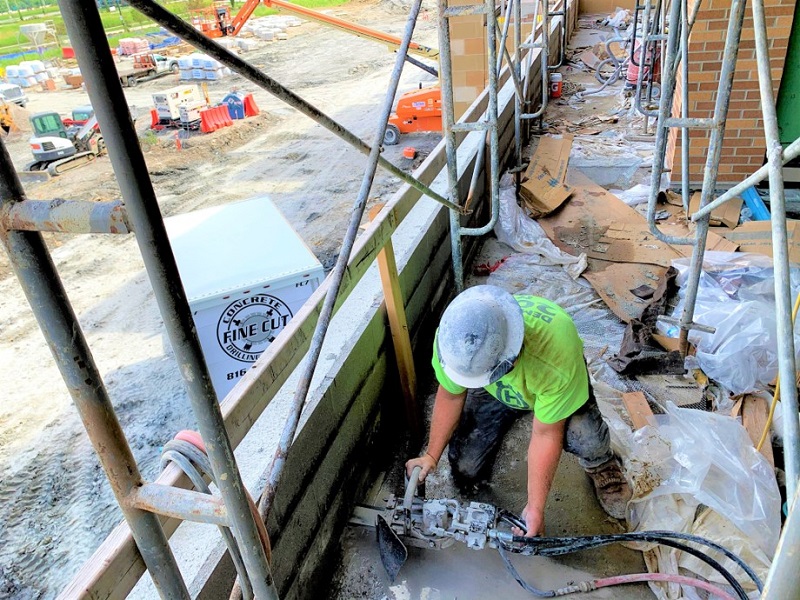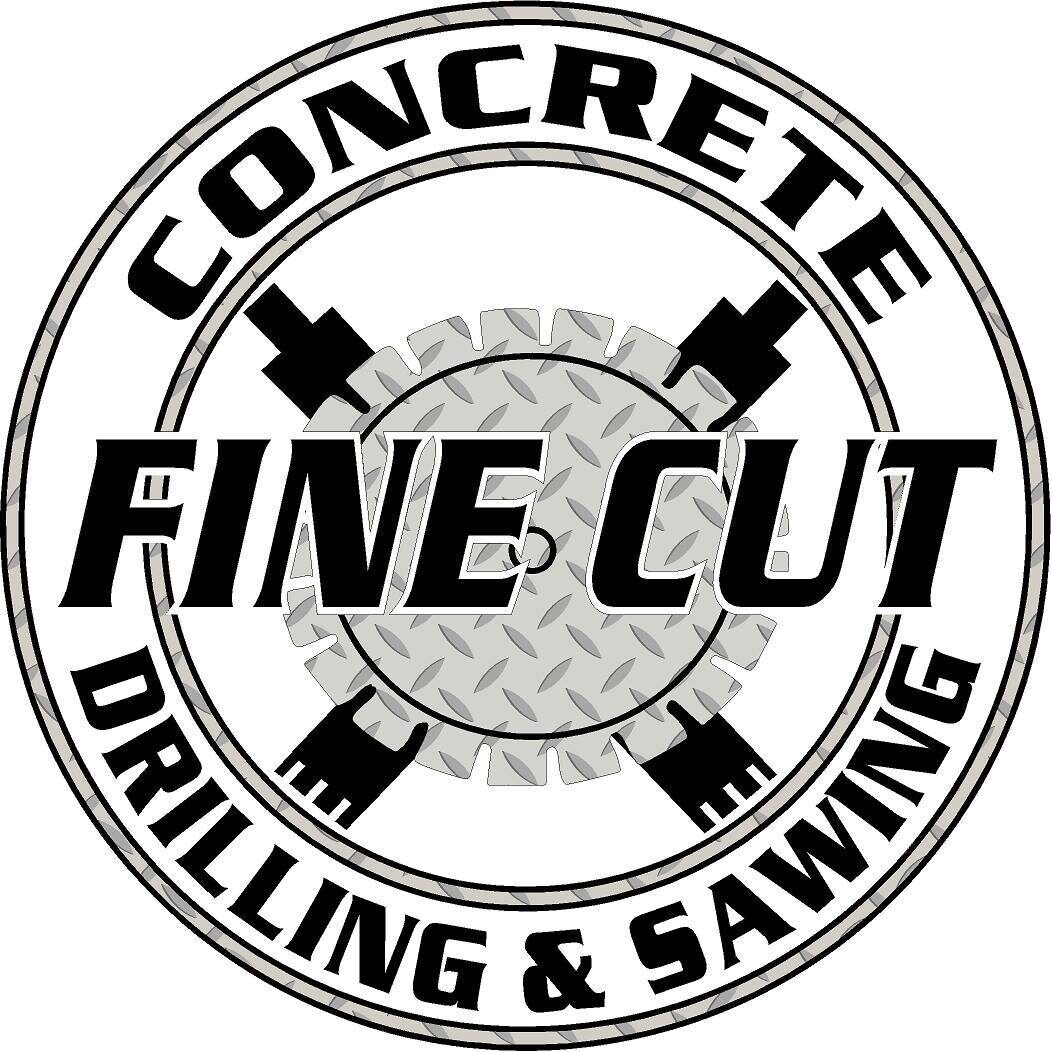 Diamond concrete chain sawing is a type of power hand sawing that allows for deeper, more controlled cuts for various jobs requiring concrete power tools. While similar to a concrete cut-off saw, a concrete chainsaw is designed to plunge nose-first into the concrete and has the ability to cut more than twice as deep as a 14-inch cut-off saw, providing a deeper cut with no overcut, and to make openings as small as 4×4-inches, as well as unconventional shapes and sizes. It can also be used to create control joints in concrete that help control cracking due to shrinkage. In the construction industry, concrete chain sawing is an everyday occurrence and requires skill and expertise that most people just don’t have. It’s all in the details, and the timing is critical.
Diamond concrete chain sawing is a type of power hand sawing that allows for deeper, more controlled cuts for various jobs requiring concrete power tools. While similar to a concrete cut-off saw, a concrete chainsaw is designed to plunge nose-first into the concrete and has the ability to cut more than twice as deep as a 14-inch cut-off saw, providing a deeper cut with no overcut, and to make openings as small as 4×4-inches, as well as unconventional shapes and sizes. It can also be used to create control joints in concrete that help control cracking due to shrinkage. In the construction industry, concrete chain sawing is an everyday occurrence and requires skill and expertise that most people just don’t have. It’s all in the details, and the timing is critical.
Determining when to make cuts depends on many factors, such as the concrete’s hardness, the type of cutting equipment used to make the saw cuts, and the type of concrete mixes and aggregate used. Weather conditions are also a primary consideration for knowing when to saw concrete. Sawing before the concrete is ready creates a messy, weakened edge along the cut (called raveling, which is caused by the saw blade pulling the aggregate out of position). It also causes undue wear of the diamond saw blades. Further, sawing too late can result in uncontrolled cracking as the concrete cures.
When temperatures are high, concrete chain sawing can be started as soon as four hours after the concrete is poured. Cooler temps, however, require at least 12 hours after pouring before the concrete is ready. You can start sawing once it’s past the raveling stage. Cuts should be made at a predetermined spacing after the concrete has set and has sufficient strength to allow concrete chain sawing, but before internal cracking begins. Some contractors delay concrete chain sawing to protect their equipment and diamond saw blade in order to reduce blade abrasion.
There are several types of saw blades that can be used, depending on the concrete type and how soon the cuts can be started. Diamond blades are made with different levels on bonded segments, hard and soft. The segment and blade should be matched to the material to be cut, which greatly extends the life of the diamond blade. Blades that are designed to cut wet MUST be used with water, and blades that are designed to cut dry can be used to cut both wet and dry. Wet concrete chain sawing is one of the most effective ways to cut concrete, masonry, stone, or asphalt. Dust exposure is kept to a minimum and diamond blades are less likely to overheat when using water during sawing.
Minimizing downtime is the best way to stay efficient on the job site, and choosing the right chain saw blade, the right equipment to use, the right time to saw, and the condition of the concrete you are sawing can eliminate time lost and costly mistakes. If you aren’t careful, you can lose an entire day just by using the wrong blade, so it’s important that you don’t cut corners when selecting your diamond blades.
There are many other variables to concrete chain sawing, and Fine Cut is experienced with them all. With the use of diamond saw blades, our team of operators are able to make plunge-cuts for creating joints, windows and doorways, cut floor slabs, walls, retaining walls, concrete roof decks and demolition cutting. For more information about concrete chain sawing and the types of projects we can do, call Fine Cut at (816) 540-5787.
